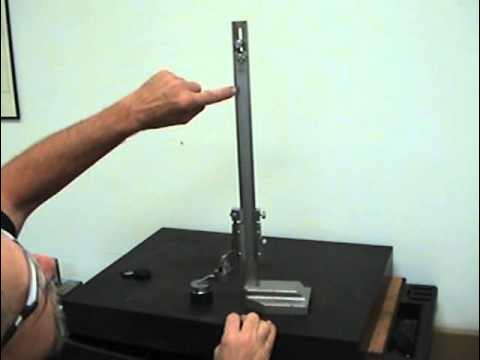pH Meter Calibration
Summary
TLDRThis video provides a step-by-step guide on how to calibrate a pH meter for accurate acidity and alkalinity measurements. It explains the process of performing a 3-point calibration using standard buffer solutions of pH 4.0 (acidic), pH 7.0 (neutral), and pH 10.0 (basic). The video walks through clearing the previous calibration, rinsing the probe, and using the standardize function for each buffer. After completing the calibration, the pH meter is ready for precise lab experiments.
Takeaways
- 🧪 The pH meter is a crucial lab instrument used for measuring the acidity or alkalinity of a liquid.
- ⚙️ The pH meter must be calibrated before each use to ensure accurate readings.
- 🔄 Calibration involves a 3-point process using three known standard buffer solutions.
- 🗑️ First, the pH meter should be purged to clear the previous calibration by pressing the Setup key twice and then Enter.
- 📊 The three standard buffer solutions used for calibration are neutral (pH 7.0), acidic (pH 4.0), and basic (pH 10.0).
- 💧 The probe should be removed from the storage solution, rinsed with de-ionized water, and carefully blotted dry before each use.
- 🧴 Place the probe into the 4.0 buffer solution first, and press the Standardize key when the Stable icon appears.
- 🔍 After each buffer solution, the probe should be rinsed and blotted dry before moving to the next standard solution.
- 📏 A range of plus or minus 0.05 is acceptable when calibrating the pH meter with the buffer solutions.
- ✅ After completing the 3-point calibration, the pH meter is ready for accurate use in lab experiments.
Q & A
What is the primary function of a pH meter?
-A pH meter is used to measure the acidity or alkalinity of a liquid.
Why is it important to calibrate the pH meter before each use?
-Calibration ensures accurate readings by resetting the pH meter based on known standard solutions.
What is the first step before calibrating the pH meter?
-The first step is to purge the pH meter by pressing the Setup key twice and then pressing Enter to clear the previous calibration.
What are the three standard buffer solutions used in a 3-point calibration?
-The three standard buffer solutions are a neutral 7.0, an acidic 4.0, and a basic 10.0 solution.
Why should the probe be rinsed with de-ionized water before and after each calibration step?
-Rinsing with de-ionized water prevents contamination of the buffer solutions and ensures accurate calibration.
What is the acceptable reading range for the 4.0 standard buffer solution during calibration?
-The acceptable range for the 4.0 standard buffer solution is plus or minus 0.05, meaning the reading can vary between 3.95 and 4.05.
What key should be pressed once the Stable icon appears on the pH meter during calibration?
-The Standardize key should be pressed once the Stable icon appears.
Why is it important to blot the bottom of the glass bulb with a kimwipe?
-Blotting the glass bulb removes excess water without damaging the delicate glass surface, ensuring accurate readings.
What should be done with the probe after completing the 3-point calibration?
-After calibration, the probe should be rinsed with de-ionized water, dried, and placed back into the storage solution.
What is the purpose of performing a 3-point calibration on the pH meter?
-A 3-point calibration teaches the pH meter to accurately measure pH levels using three standard buffer solutions, ensuring precise readings during experiments.
Outlines

This section is available to paid users only. Please upgrade to access this part.
Upgrade NowMindmap

This section is available to paid users only. Please upgrade to access this part.
Upgrade NowKeywords

This section is available to paid users only. Please upgrade to access this part.
Upgrade NowHighlights

This section is available to paid users only. Please upgrade to access this part.
Upgrade NowTranscripts

This section is available to paid users only. Please upgrade to access this part.
Upgrade NowBrowse More Related Video

Using a pH Meter

Belajar Cara Menggunakan Oscilloscope Digital | Cara Kalibrasi Oscilloscope Digital

Vernier Height Gage

How to Calibrate and use the pH Meter?

What Is The pH Scale | Acids, Bases & Alkalis | Chemistry | FuseSchool

Percobaan Pengukuran Tegangan Listrik Dengan Osiloskop | Praktikum Fisika Dasar 2
5.0 / 5 (0 votes)